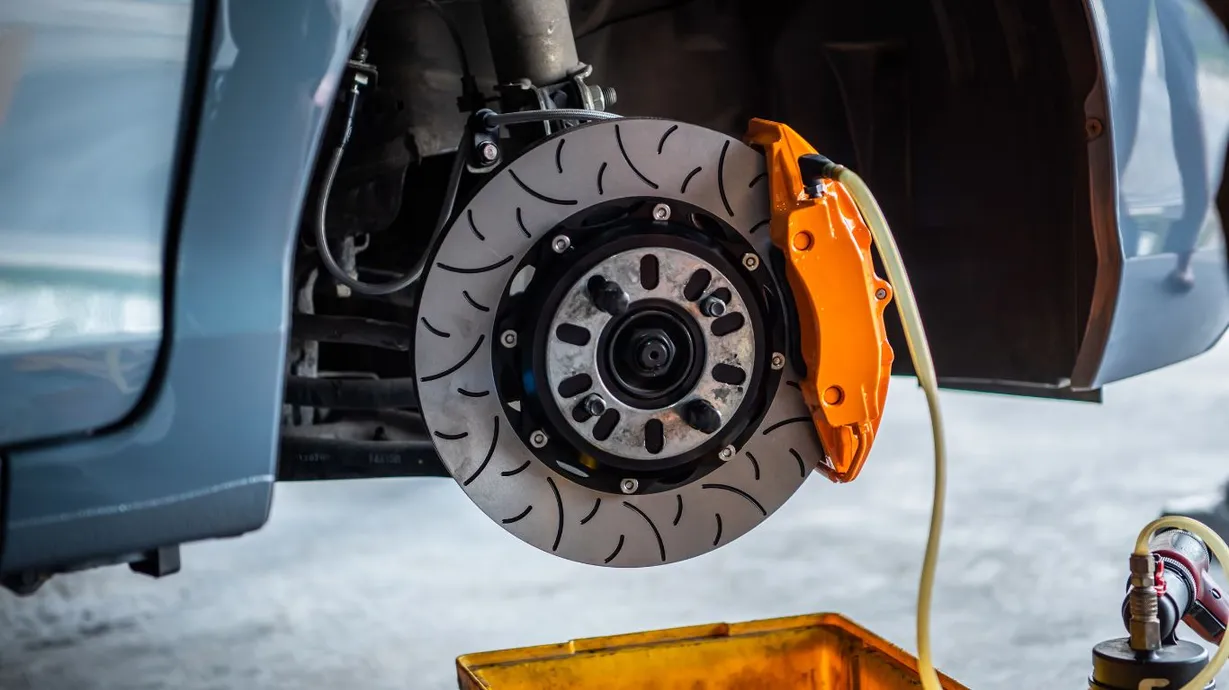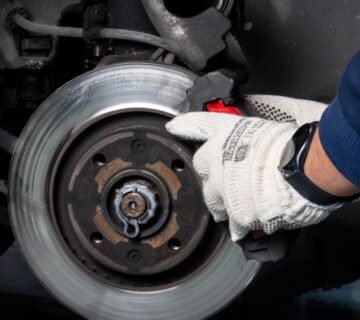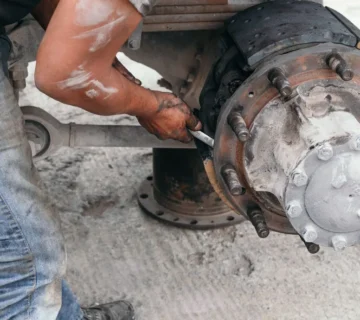Have you ever wondered how your vehicle’s brakes work so seamlessly? At the heart of this critical safety system lies a component you may not be familiar with: the brake master cylinder. This unassuming yet vital part serves as the command center for your entire braking system. When you press the brake pedal, the brake master cylinder springs into action, translating that foot pressure into hydraulic force. This force then travels through brake lines to activate your vehicle’s brakes, bringing you safely to a stop. Understanding the brake master cylinder’s role is key to appreciating the engineering marvel that keeps you secure on the road.
Understanding the Brake Master Component
The brake master component, often referred to as the brake master cylinder, is the heart of your vehicle’s braking system. This crucial element plays a pivotal role in transforming the force you apply to the brake pedal into hydraulic pressure that activates your car’s brakes.
Anatomy of the Brake Master Cylinder
At its core, the brake master component consists of a fluid-filled cylinder containing one or two pistons, depending on the vehicle’s design. When you press the brake pedal, these pistons move, creating pressure in the brake lines. This pressure is then transmitted to the wheel cylinders or calipers, causing your vehicle to slow down or stop.
The Vital Role in Vehicle Safety
The brake master function extends beyond just creating pressure. It serves as a central hub for your entire braking system, ensuring that brake fluid is distributed evenly to all four wheels. This even distribution is critical for maintaining control and stability during braking, especially in emergency situations.
Signs of Brake Master Failure
Understanding the symptoms of brake master failure is crucial for vehicle safety. Common signs include:
- A spongy or soft brake pedal
- Brake warning light illumination
- Visible brake fluid leaks
- Uneven braking performance
If you notice any of these symptoms, it’s essential to have your vehicle inspected by a professional immediately. Regular brake system maintenance can help prevent unexpected failures and ensure your vehicle’s braking system remains in top condition.
The Role of the Brake Master in the Vehicle Braking System
The brake master component is the heart of your vehicle’s braking system, playing a crucial role in ensuring your safety on the road. This essential device converts the force applied to the brake pedal into hydraulic pressure, which then activates the brakes at each wheel.
How the Brake Master Functions
When you press the brake pedal, it activates the brake master cylinder. This cylinder contains brake fluid and pistons that create the necessary hydraulic pressure. The pressure is then distributed through brake lines to the individual wheel cylinders or calipers, causing the brake pads to clamp down on the rotors or drums, slowing or stopping your vehicle.
The brake master function is not just about stopping power; it’s also about precision and control. Modern brake masters are designed to provide a consistent pedal feel and responsive braking across various driving conditions.
Recognizing Brake Master Failure
Understanding the signs of brake master failure is crucial for maintaining your vehicle braking system. Common symptoms include:
- A spongy or soft brake pedal
- Brake warning light illumination
- Visible brake fluid leaks
- Inconsistent braking performance
If you notice any of these signs, it’s essential to have your vehicle inspected immediately by a qualified mechanic.
Importance of Brake System Maintenance
Regular brake system maintenance is vital for optimal performance and safety. This includes:
- Checking brake fluid levels and quality
- Inspecting brake lines for wear or damage
- Replacing worn brake pads and rotors
By prioritizing brake system maintenance, you can prevent brake master failure and ensure your vehicle’s braking system remains reliable and effective.
Types of Brake Master Cylinders: Tandem vs. Single
When it comes to the heart of your vehicle’s braking system, the brake master component plays a crucial role. Understanding the different types of brake master cylinders can help you appreciate the complexity and importance of this vital part.
Tandem Brake Master Cylinders
Tandem brake master cylinders are the most common type found in modern vehicles. This design features two separate chambers, each controlling a different set of brakes. Here’s why they’re preferred:
- Enhanced safety: If one circuit fails, the other remains operational
- Improved braking performance: Allows for more precise brake pressure distribution
- Compliance with regulations: Meets safety standards in most countries
The tandem design significantly reduces the risk of complete brake master failure, ensuring that you always have some braking power available.
Single Brake Master Cylinders
While less common in newer vehicles, single brake master cylinders are still found in some older models and specialized applications. They consist of one chamber controlling all brakes simultaneously.
Despite their simpler design, single brake master cylinders have some drawbacks:
- Higher risk of total brake system failure
- Less precise control over individual wheel braking
- Limited compatibility with modern vehicle braking systems
Understanding these differences is crucial for proper vehicle braking system maintenance. Whether you have a tandem or single brake master cylinder, regular inspections and timely replacements are essential to ensure optimal brake master function and overall vehicle safety.
Remember, the brake master component is not just a part – it’s the command center of your entire braking system. By familiarizing yourself with its types and functions, you’re taking an important step towards safer and more informed vehicle ownership.
Symptoms of Brake Master Failure
Recognizing the signs of a failing brake master component is crucial for maintaining your vehicle’s safety. The brake master cylinder, a vital part of the vehicle braking system, can exhibit several telltale symptoms when it begins to malfunction.
Spongy or Soft Brake Pedal
One of the most common indicators of brake master failure is a soft or spongy brake pedal. If you notice that your brake pedal feels less firm or sinks to the floor with little resistance, it could signify a problem with the brake master component. This symptom often occurs due to air in the brake lines or a leak in the master cylinder.
Inconsistent Braking Performance
Another red flag is inconsistent braking performance. If your vehicle’s stopping power seems to fluctuate or you experience a pulsating brake pedal, it may be time to inspect your brake master cylinder. These issues can arise from uneven fluid distribution within the brake system, often caused by a failing master cylinder.
Warning Lights and Fluid Leaks
Pay close attention to your dashboard warning lights. If the brake warning light illuminates, it could indicate low brake fluid levels or a problem with the brake master function. Additionally, visible brake fluid leaks beneath your vehicle are a clear sign of brake system maintenance needs, potentially stemming from a compromised master cylinder.
Contaminated Brake Fluid
Inspect your brake fluid regularly. If it appears dark or contains debris, this could indicate internal corrosion of the brake master component. Contaminated fluid can lead to reduced braking efficiency and accelerated wear on other brake system components.
By staying vigilant and addressing these symptoms promptly, you can prevent more severe brake master failure and ensure your vehicle’s braking system remains in optimal condition.
Maintaining Your Brake Master for Optimal Performance
Regular maintenance of your brake master component is crucial for ensuring the safety and efficiency of your vehicle’s braking system. By following these guidelines, you can extend the life of your brake master and maintain optimal brake function.
Regular Inspections
Perform visual inspections of your brake master component at least twice a year. Look for signs of wear, corrosion, or fluid leaks. If you notice any unusual brake pedal behavior or decreased braking performance, it could indicate brake master failure. In such cases, consult a professional mechanic immediately.
Fluid Maintenance
The brake fluid is a critical element of your vehicle braking system. Check the fluid level in the brake master reservoir regularly and top it up if necessary. Use only the type of brake fluid recommended by your vehicle manufacturer. Remember, brake fluid absorbs moisture over time, which can lead to decreased performance and corrosion.
Bleeding the Brake System
Periodically bleeding your brake system helps maintain optimal brake master function. This process removes air bubbles that can accumulate in the brake lines, ensuring consistent pedal feel and braking performance. While this can be done at home, it’s often best left to professionals during routine brake system maintenance.
Addressing Issues Promptly
If you notice any changes in brake pedal feel, such as sponginess or excessive travel, it could indicate a problem with your brake master component. Don’t ignore these signs – addressing issues promptly can prevent more serious brake master failure and ensure your safety on the road.
By following these maintenance tips, you can keep your brake master in top condition, ensuring reliable and efficient braking performance for your vehicle.
Brake System Maintenance: Beyond the Brake Master
While the brake master component is the heart of your vehicle’s braking system, maintaining the entire system is crucial for optimal performance and safety. Regular brake system maintenance goes beyond just focusing on the brake master function. Let’s explore some key aspects of comprehensive brake care.
Routine Inspections
Periodic inspections are vital for identifying potential issues before they escalate. During these checks, a professional mechanic will examine not only the brake master but also other critical components such as brake pads, rotors, and calipers. These inspections can help prevent brake master failure and ensure your vehicle’s braking system operates smoothly.
Fluid Management
The brake fluid is an often overlooked yet crucial element of your vehicle braking system. Regular checks and timely replacements of brake fluid are essential. Over time, brake fluid can absorb moisture, leading to decreased performance and potential corrosion within the system, including the brake master component.
Component Replacement
As your vehicle ages, various parts of the braking system may wear out. Timely replacement of worn brake pads, shoes, and rotors is crucial for maintaining optimal braking performance. While these components may seem separate from the brake master, their condition directly impacts the overall efficiency of your braking system.
Professional Servicing
While some maintenance tasks can be performed by car owners, complex issues often require professional attention. If you notice any unusual sounds, vibrations, or changes in braking performance, it’s crucial to consult a qualified mechanic. They can diagnose and address problems related to the brake master function or other components of your vehicle’s braking system.
Remember, regular brake system maintenance not only ensures your safety but can also save you money in the long run by preventing major repairs or brake master failure. By taking a holistic approach to brake care, you can keep your vehicle’s braking system in top condition for years to come.
Troubleshooting Brake Master Issues
When it comes to your vehicle’s braking system, the brake master component plays a crucial role. Understanding how to troubleshoot brake master issues can help you maintain your vehicle’s safety and performance. Let’s explore some common problems and solutions related to this vital part of your brake system maintenance routine.
Recognizing Signs of Brake Master Failure
One of the first indicators of a potential brake master failure is a spongy or soft brake pedal. This occurs when air enters the brake lines, compromising the hydraulic pressure necessary for effective braking. Other signs include:
- Brake fluid leaks under the vehicle
- Warning lights on the dashboard
- Inconsistent brake pedal behavior
If you notice any of these symptoms, it’s crucial to address them promptly to ensure your vehicle braking system remains in top condition.
Diagnosing Brake Master Problems
To properly diagnose issues with your brake master component, start by checking the brake fluid level. Low fluid can indicate a leak in the system or worn brake pads. Next, inspect the brake lines for any visible damage or leaks. If you’re comfortable, you can test the brake master function by applying pressure to the brake pedal and observing if it holds firm or slowly sinks to the floor.
Professional Inspection and Repair
While some troubleshooting can be done at home, it’s often best to seek professional help when dealing with brake master issues. A certified mechanic can perform a thorough inspection of your vehicle’s braking system, including pressure tests and component checks. They can accurately diagnose problems and recommend necessary repairs or replacements to ensure your brake master component is functioning correctly and safely.
Remember, regular brake system maintenance is key to preventing major issues and ensuring your vehicle’s braking performance remains reliable. Don’t hesitate to consult a professional if you suspect any problems with your brake master or other components of your braking system.
Replacing the Brake Master: When and How
Signs It’s Time for a Replacement
Your vehicle’s brake master component is crucial for safe driving, but it doesn’t last forever. Watch for these warning signs that indicate it’s time to replace your brake master:
- Spongy or soft brake pedal
- Brake warning light on the dashboard
- Visible brake fluid leaks
- Inconsistent braking performance
If you notice any of these symptoms, don’t delay in addressing the issue. A failing brake master can compromise your entire vehicle braking system, putting you and others at risk on the road.
The Replacement Process
Replacing a brake master is a complex task that requires expertise in brake system maintenance. While it’s possible for experienced DIY mechanics to tackle this job, most vehicle owners should entrust this critical repair to a professional technician. Here’s an overview of the process:
- Diagnose the issue to confirm brake master failure
- Drain the brake fluid from the system
- Disconnect brake lines and remove the old brake master
- Install the new brake master component
- Reconnect brake lines and refill the system with fresh brake fluid
- Bleed the brakes to remove any air in the lines
- Test the brake master function and overall braking performance
Remember, proper installation is crucial for optimal brake master function. Improper replacement can lead to brake system failure, so it’s essential to ensure the job is done correctly.
Preventive Maintenance
To extend the life of your brake master and maintain peak performance of your vehicle braking system, follow these maintenance tips:
- Regularly check brake fluid levels and quality
- Address any brake-related issues promptly
- Have your brakes inspected during routine vehicle maintenance
- Use high-quality brake fluid recommended by your vehicle manufacturer
By staying proactive with brake system maintenance, you can potentially avoid premature brake master failure and ensure your vehicle’s braking system remains reliable for years to come.
Conclusion
In conclusion, the brake master component is a vital element of your vehicle’s braking system, directly influencing the safety and efficiency of your car. As the heart of the braking system, it converts the force applied to the brake pedal into hydraulic pressure, enabling the brake calipers or wheel cylinders to activate and stop the vehicle. Without a properly functioning brake master component, your vehicle’s ability to brake effectively is compromised, leading to potentially dangerous situations.
Regular maintenance and timely inspections are crucial for ensuring the brake master component is in good working condition. Issues such as fluid leaks, air in the brake lines, or worn seals can lead to brake failure, compromising both the vehicle’s braking power and the driver’s safety. If any signs of malfunction, like a soft brake pedal or unusual noises, are noticed, it’s essential to have the system inspected by a professional immediately.
By taking proactive measures, such as regular brake checks and fluid level maintenance, you can prevent costly repairs and ensure your vehicle remains safe on the road. Ultimately, understanding the importance of the brake master component and maintaining it properly will give you peace of mind and confidence in your vehicle’s braking performance.




